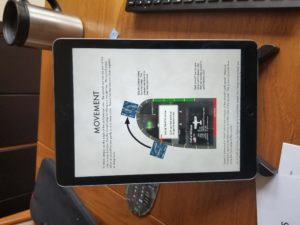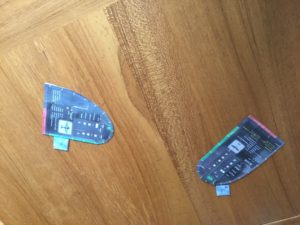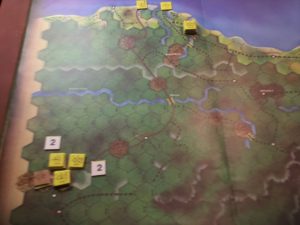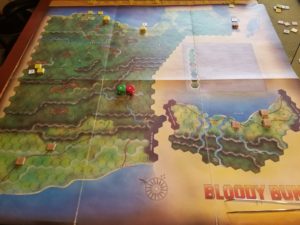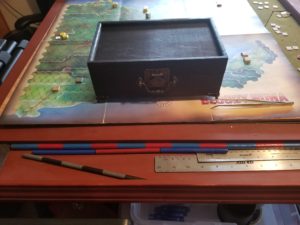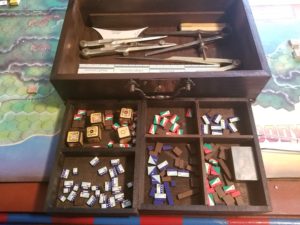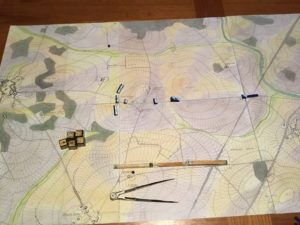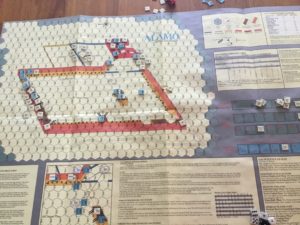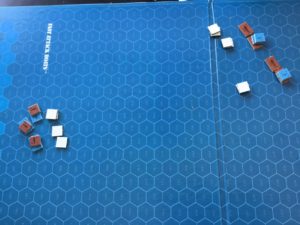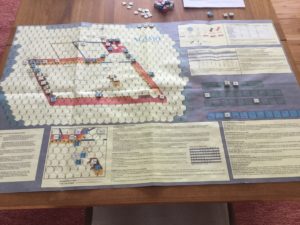Been playing another small game. It’s a game with a war theme, so I guess it is a war game. Realism…….not so much. Entertainment and Fun……so much.
It’s Pocket Landship, a PNP game I stumbled across over at Boardgamegeek.
The link is for the updated version, with more options and better graphics. The original looks like this when set up.
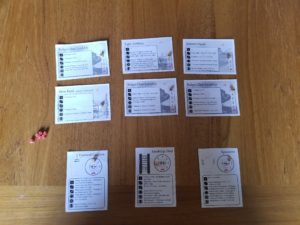
Game is simple and elegant. In the basic game, you control one Landship, with three components – Hull, Sponson, and Gun. The enemy has six random elements, including infantry, artillery and other land ships. Only the front three are in play at any one time. Roll three die for the enemy. Assign lowest die to the left unit, and other two in ascending order. See what happens. For your Landship, roll three die and allocate as best you can. If you destroy one enemy element, another moves up. Last Man Standing wins.
Fun and compact. As the say, a great “filler” game. Just like TAC, buy this one before it gets snapped up, pimped up, and priced up!
